Heat & high ET = droughty lawns; brown patch prevalent on irrigated lawns; dollar spot hitting bentgrass fairways with force & lurking on Kentucky bluegrass; 2025 field day in the books; brief pause in turfgrass diagnostic services
* Turfgrass diagnostics will be taking a necessary hiatus from July 10-21. We will be attending the Olympics of Turfgrass Research (International Turfgrass Research Conference) in Karuizawa, Japan, and sharing information with a large group of colleagues from around the globe. Samples sent during this time will be kept in the fridge but may require resubmission. *
Weather
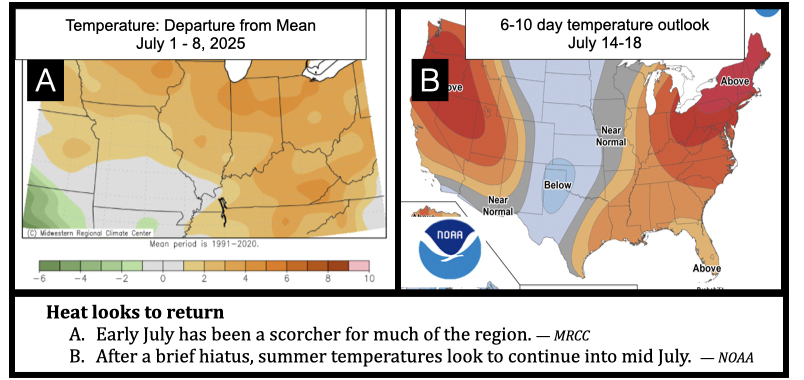
Summer didn’t waste much time after its solstice to deliver a solid heat dome to the region in late June. High humidity was also invited to the party, as muggy days with 60-70 degree + dew points sent “real-feel” temperatures soaring into the 100s. Recorded temperatures eclipsed 90 degrees for 8 days straight from June 21-28, followed by 4 straight days during July 3-6. Since 1990, Indianapolis averages around 20 days of ≥ 90 F, with the last real zingers being 2010 (37 days), 2011 (42 days), and 2012 (51 days). While cool season grasses struggle in high daily temperatures, they most often crumble with the corresponding high-low daily temperatures. During this late July period, low temperatures remained in the mid to high 70s, meaning cool season grasses did not get a needed break at night.
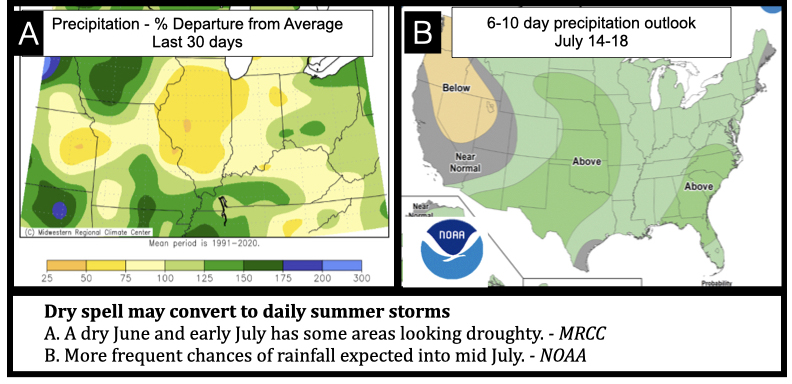
While rainfall didn’t completely vanish, its comparative absence compared to this past spring (particularly in southern IN) was a blessing. Seasoned turfgrass managers will often look back at summers with high rainfall combined with high temperatures as the worst, since as noted in the previous report, when water in the soil profile gets hot, it stays hot. Controlling the water and using irrigation wisely is key to maintaining in this heat, whether it be putting greens mowed to a tenth of an inch daily or tall fescue mowed to 3-4 inches once a week. Rainfall chances are expected to return for at least the middle of the state, and 6-14 day forecasts slant towards above normal precipitation chances through mid-July.
Drought Dormancy on Lawns
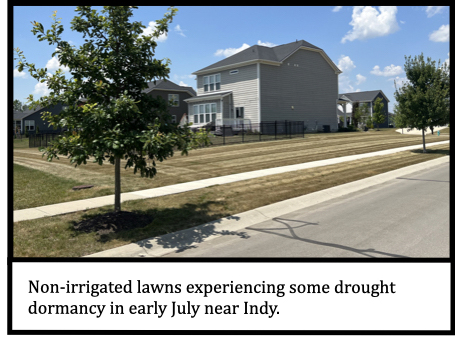
A visit to northern Indy to witness fireworks with friends also revealed some of the quick drought dormancy occurring on some lawns in the area. In a recent post from Midwest Regional Climate Center Director Dr. Beth Hall, approximately 1.5” of water could be expected lost from July 3-10, which will likely far exceed the precipitation. This could mean the abnormally dry and moderate drought still present in the northwest portion of the state could extend to other areas, and is showing its teeth in lawns as in the photo above. On the flip side, brown patch and other diseases aren’t noticed in this yard, and if the drought is indeed short-term a good likelihood exists that the lawn will green right back up. As a note, a lawn that appears this drought affected should not be mowed. Mowing grass that isn’t growing isn’t just a waste of time, but the traffic and warm mower tires can impart stress that is conspicuous much longer than minor drought dormancy.
Brown Patch Hitting Tall Fescue Lawns Hard

Brown patch went from mildly lurking, to donning a sequin lined leather jacket and grabbing the microphone in early July. Irrigated tall fescue lawns were hit hardest, with light brown patches mottling and thinning the sward. Remember, that brown patch is the Achilles heel of tall fescue, but also can work in cahoots with Pythium blight during periods with combined high heat and extreme rainfall and/or excessive irrigation. As detailed at field day, diagnosing this disease is relatively easy if the host is identified correctly, since the characteristic leaf lesions (dark brown outer margin and tan to white interior) are easily observed. Controlling brown doesn’t require starting a robust preventive fungicide schedule in March or April for much of Indiana (which is way too early) but instead on fungicide choice. DIY homeowners and lawn care operations struggle with this disease when attempting to control it with applications of propiconazole, myclobutanil or thiophanate-methyl . Research done by myself and colleagues show these products, which may be effective on shorter cut turfgrasses, do not work well on tall fescue lawns. Instead more phytomobile strobilurins, such as azoxystrobin, work more effectively for control. In most cases, these chemistries work so well that a preventive 4-5 application strategy during the summer is unnecessary, and the first application can be more adequately timed as an early curative after scouting and diagnosing the disease.
Dollar Spot Extremely Active on Creeping Bentgrass Fairways
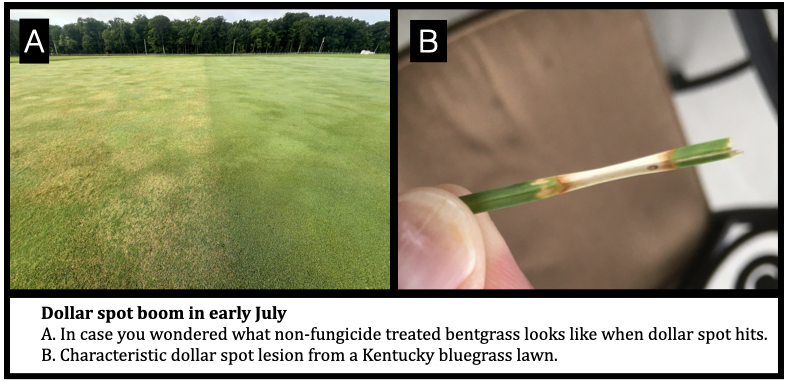
High humidity also led to an explosion in dollar spot, particularly on creeping bentgrass fairways, since the last report in mid-June. Examining the Smith-Kerns model in our Turf Disease Prediction Tool, this severe outbreak corresponds to a period from June 18 to present with state-wide dollar spot probability above 40% and into the mid 50% range. Kentucky bluegrass lawns and roughs are also starting to show some dollar spot activity, which gradually accumulates and really swings the hammer towards noticeable decline in August and September.
During this time, golf superintendents have reported the need for strict adherence to their fungicide application intervals, and as one put it “right now 14 days, really means 14 days”. As we move forward, please report any unusual dollar spot outbreaks to us that seem to buck your efforts at control. An upcoming research project will be investigating fungicide resistance and we’d like to build a current survey of the region.
2025 Turfgrass & Landscape Field Day in the Books
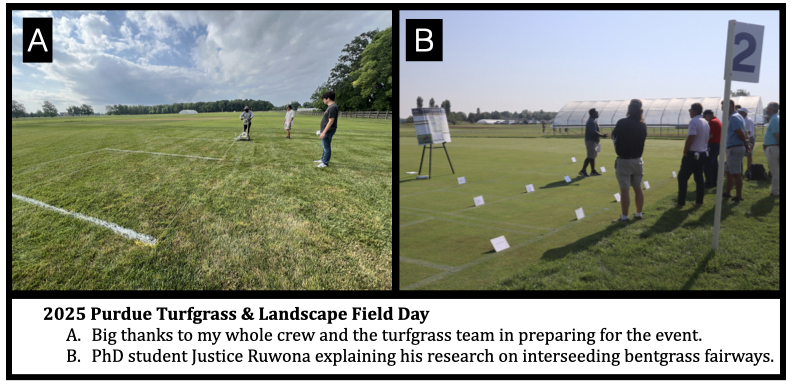
Another field day event has come and gone, and again on my 4th iteration here at Purdue I come away impressed by the quality of the content from my colleagues along with the support and enthusiasm from the industry. Thank you to all who came out and participated despite the short turnaround from the holiday weekend, as your commitment makes the hard work of the faculty, students and staff (kudos to DTC manager Glenn Hardebeck and assistant Ben Royal) worthwhile and rewarding.
As usual, our response is next… and our next education event will be the Lawn Care Diagnostic Training to be held on August 14. For more information on this event, click here.
Additionally, Dr. Doug Richmond has created an online module course Understanding Turfgrass Insecticides to allow you to earn CCH education credits (with six additional states also given approval) from the comfort of your favorite recliner. This online education format, spearheaded by Dr. Richmond, will be developed into more offerings to include weed (Patton and disease (Miller) control. The format is unique, interactive and quite frankly the most innovative modern designs of online learning that I have seen. I’m excited to be a part of this collective effort and in the development phases of my courses and think you will enjoy this new method of learning about IPM and responsible pesticide usage.
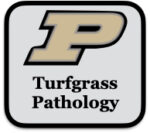
Extension Turfgrass Pathologist – Purdue University
Follow on Twitter: @purdueturfpath